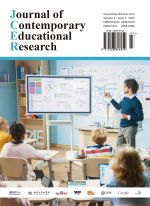Digital Methods in Ideological and Political Education
Abstract
With the rapid development of information technology, digitalization has become central to educational reform, especially in ideological and political education. Digital transformation revitalizes traditional models and offers opportunities for innovation. This paper explores key pathways for empowering ideological and political education through digitalization, including integrating digital resources, promoting blended learning, and enabling personalized education through data. It also addresses challenges like technology integration, students’ digital literacy, and data security. To overcome these, the paper suggests strengthening teachers’ digital skills, improving platform construction, and enhancing data security. Implementing these strategies can boost teaching quality and students’ ideological literacy, supporting the high-quality development of ideological and political education. This paper offers theoretical and practical insights for advancing digital ideological education.
References
Li J, 2025, Integration Pathways, Challenges, and Strategies of Ideological and Political Education under the Background of ‘Internet+’. China New Communications, 27(02): 131–133.
Luo D, 2025, Paths to Enhance the Teaching and Educating Abilities of College Ideological and Political Teachers in the Era of Digital Intelligence, Heilongjiang Daily, February 11, 2025, (008).
Jiao N, 2024, Empowering Ideological and Political Education through Education Digitalization for High-Quality Development, Xinhua Daily, November 14, 2024, (015).
Diao J, 2025, Digital Empowerment for the Connotative Development of College Ideological and Political Education, Heilongjiang Daily, February 11, 2025, (008).
Dong Y, Ge Y, 2024, Empowerment of Precise Ideological and Political Education in Higher Education with Educational Digitalization. Journal of Contemporary Educational Research, 8(4): 23–28.
Xu K, Yang P, 2024, Challenges and Countermeasures for Ideological and Political Education in Colleges and Universities in the Context of Digitalization. Adult and Higher Education, 6(7): 161–167.

